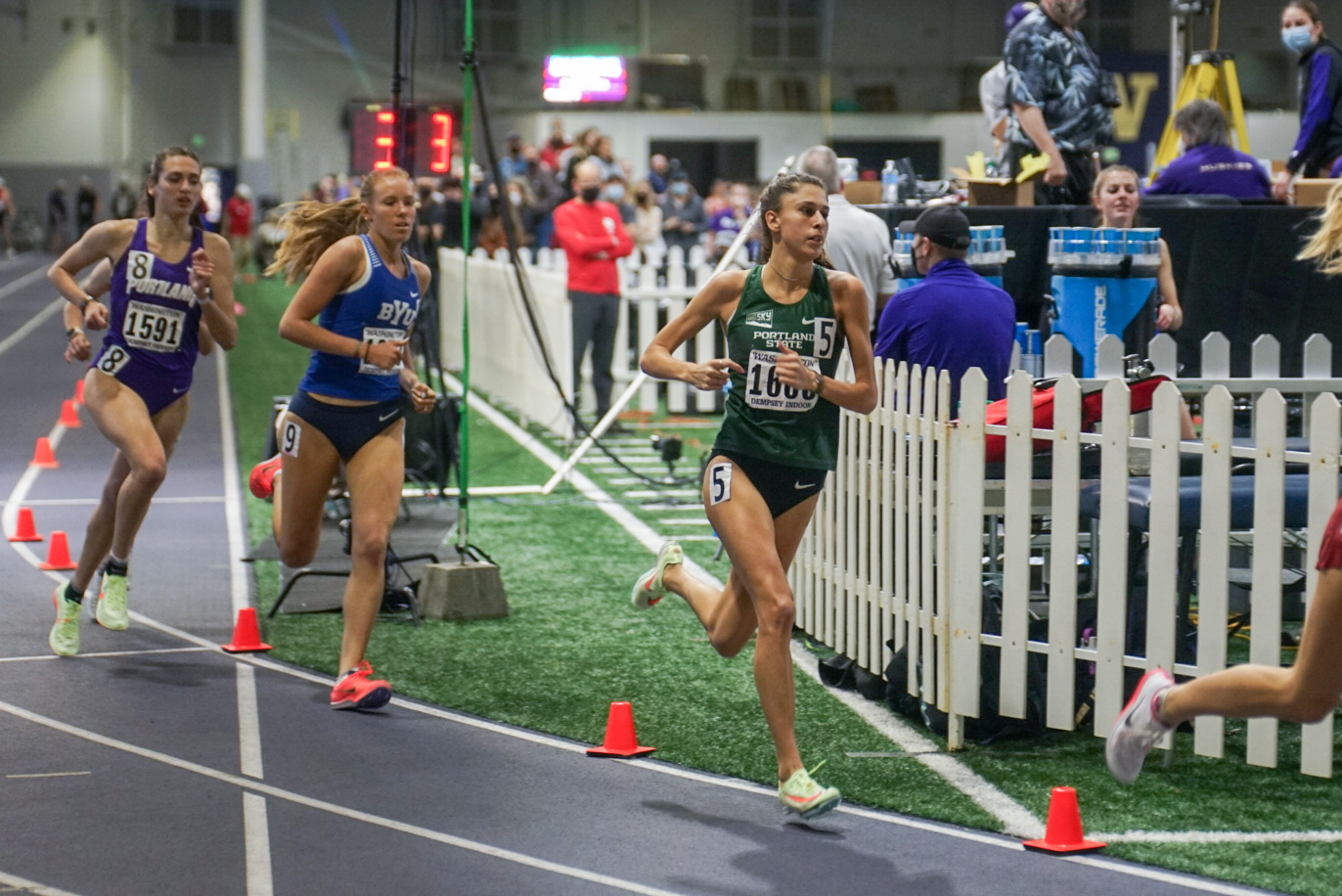Solange
Is this the best we can do for Solange?
I’m sitting in the eleventh row of the sold-out Arlene Schnitzer Concert Hall, and Solange’s opening act, the all-white clad percussionist Jamire Williams, has just finished his set mixing film score and jazz. I’m taking in the depth and scale of the venue, its vastness poised to swallow unworthy artists. It’s one of the most picturesque venues in Portland with the capacity to match Solange’s star power.
Some of Portland’s most stylish people have come out for Solange. Almost everyone here has a mix of youth, taste and money. “Want to compare notes?” asks Jason (I can’t remember if this is his real name or not), a gay-presenting man seated next to me with better clothes, cologne and skincare than mine. Jason compares Williams to EDM. Jason goes on to talk about Solange’s Coachella outfit, her relationship with Joanne the Scammer, and compares her to commercially-driven pop artists like Lady Gaga, Nicki Minaj and (of course) Beyoncé. To compare Solange Knowles to her sister and her sister’s contemporaries is to miss the appeal of Solange the Artist, the woman who for years was mocked by the Hollywood machine for being too Black and even now is not bound by fiscal quarter deadlines, but how am I going to argue pop music with a gay man with better clothes, cologne and skincare than me? Even if I’m right, he’s clearly winning.
I didn’t have to wonder for long: The house lights dimmed, the medley of Tinashe, Alicia Keys and Lauryn Hill faded, and LEDs of red and blue washed over a background of a red sphere on a white field. I questioned the artistic significance of red and blue: Americana, the police, heaven and hell, the contemporary Weeknd/MNEK/Black Box palette?
Blue gave way to red and the band took the stage, all in red: two guitar players, a keyboard player, a drummer, two brass players, two backing singers and dancers, and finally, the goddess herself, the queen of elevator drama: Solange. The entire Arlene Schnitzer Concert Hall rose to their feet to feel the radiance. Some people from the back rushed forward to get a better view, which prompted a response from at least one security guard.
Solange’s artistry is the result of 15 years’ hard labor, and it shows tonight.
She performed the majority of her new album, A Seat at the Table, and noted Portland was the first audience to hear it live. “Rise,” “Weary,” “Cranes in the Sky,” and “Junie” all took advantage of the Schnitz’s space and acoustics, along with some vintage selections, including “Some Things Never Seem to Fucking Work,” “Losing You,” and “T.O.N.Y.” Solange and her band swayed and danced with movements that held a veneer of Carefree Black Magic over a surface of quiet intensity. Coordinated arm movements and head bobs meant to show hair’s dynamic movement felt choreographed and intuitive at the same time. There was a movement or two in “Mad” where the veneer cracked, and Solange let loose a few well-timed shrieks that transformed her from the polished hipster R&B figure I learned about on Sol-Angel and the Hadley St. Dreams into a bona fide rock star.
Speaking of rock star, during “F.U.B.U.” Solange left the stage and ran/danced/sang among the mortals. She spent a little time among the first few rows, then ran back to the back of the Schnitz’s floor to sing and pose for the people in the back. From an art-viewing perspective, it was thrilling to invert the backdrop of the stage for a wall of audience members. For my arts and culture writing self, it was the moment stories are made of, and for my Caucasian self, I couldn’t help but feel this moment was being experienced on a much deeper level than I could appreciate by other members of the audience. Indeed, as Solange left and returned to the stage, venue security momentarily stopped policing the audience, who wanted only a moment to brush with constellational greatness.
In the space between when Solange & Co. left the stage and returned for their “Don’t Touch My Hair” encore performance, I felt like an emotional exorcism had taken place inside the hall. People who have been policed and regulated for longer than their parents’ lives had moments of rare reprieve, to be as loud as they wanted, as regal as they wanted, as carefree as they wanted, as messy as they wanted, as Black as they wanted. There was not a low or weak moment anywhere in the show: It was a triumph for anyone who has fought for their right to occupy space existing in their own skin.
Big Freedia Queen Diva
Is this the best we can do for Big Freedia?
I’ve just power-walked from the Schnitz to Dante’s, hoping that I am going to see the opening act, Tribe Mars, for documentation’s sake. I made it to the sold-out Burnside landmark and felt sad knowing that, for my review purposes, this PDX-native soul/funk/hip-hop band was going to get compared to an avant garde drummer, the Queen of Big Bounce and Beyoncé’s little sister. Yet, was Maarquii busy tonight? Tribe Mars’ rapper and vocalist were occasionally drowned out by their own music, and their energy and tempo simply did not match that of the aforementioned artists. As I wait for the transition between Tribe Mars and Big Freedia, I’m focused on the audience, and the similarities and differences between the people I just left at the Schnitz. The audience is diverse in gender, race, age and identity display: I was surprised to see people old enough to be my parents crowded into a room with guys in suits, drag queens and women of literally all shapes and sizes. Nobody here is dressed like they spend much time at the Schnitz, but the energy is the same: restlessly positive and excited.
When Big Freedia and her crew take the stage, the jam-packed audience makes me realize what “bounce” means. Big Freedia comes out dressed like an AHS: Coven substitute teacher with burgundy-purple hair reminiscent of Azealia Banks or Dai Burger. I’m not sure what songs Big Freedia played from her impressive discography, and I’m not sure it even matters. Big Freedia is all-American: whereas Solange finds strength in lightness and subtlety, Big Freedia blows the doors off the hinges with her presence before she is even present. Her inversion of Adele’s “Hello” from morose self-pity to aggressive self-love was masterful and cackle-inducing. It’s obvious why Beyoncé chose her contributions for “Formation” (which Big Freedia led a cover/chant of tonight) and how an artist so queer can collaborate with the dude-broiest of rappers: You’re either into Big Freedia or you’re boring.
Big Freedia mentions, down to the number of days, how many years have passed between now and the last time she was set to perform in Portland, which was her mother’s untimely death. Tragedy tore her away from us, and she came back to exercise some of that grief; likely, too, the anxiety and grief that have steadily grown over the past eighteen months.
Soul’d Out Festival and the City of Portland
“For us. This shit is for us.”
This section of the chorus from Solange’s “F.U.B.U.” is poignant tonight. The audience considers not just the broad applications to which this verse can apply, but the hyper-local as well. From Soul’d Out Productions, Portland’s first annual Soul’d Out Festival brought to the center stage artists playing funk, jazz, R&B, hip-hop and dance music: genres of music originated and perfected by Black Americans. Eleven venues in the Whitest City in America hosted local legends and national headliners for five nights of entertainment that only celebrate and exemplify a small beam of the total prism that is American Blackness.
Numerous acts worthy of coverage appeared on the eighth annual Soul’d Out Festival’s roster. But because I am a student with multiple jobs and a bank account that does not reflect this fact, I knew I wasn’t going to see even close to every show. My plan: witness the grandeur of Solange, use my Powers of Internship to see Big Freedia Queen Diva at Dante’s, and get adopted by Solange and/or Big Freedia and taken away from this #basic city/my student loans.
My night went almost entirely according to plan, though Multnomah County won’t let gay Caucasian men pushing 30 self-appoint successful Black femmes in their early thirties as their legal guardian(s). By the end of the night, I barely had enough energy to walk home. My head and heart were full, but my body and mind were spent. Anyone who was lucky enough to see both shows had a unique, different-yet-similar experience from me. Add more shows to the mix, and you begin to see the totality of the Soul’d Out Festival’s curated experience. Legends, contemporaries, and nonmusicians came together to forge what hopefully will continue to be a new, proud tradition for a city already famous for its multi-venue festivals.






